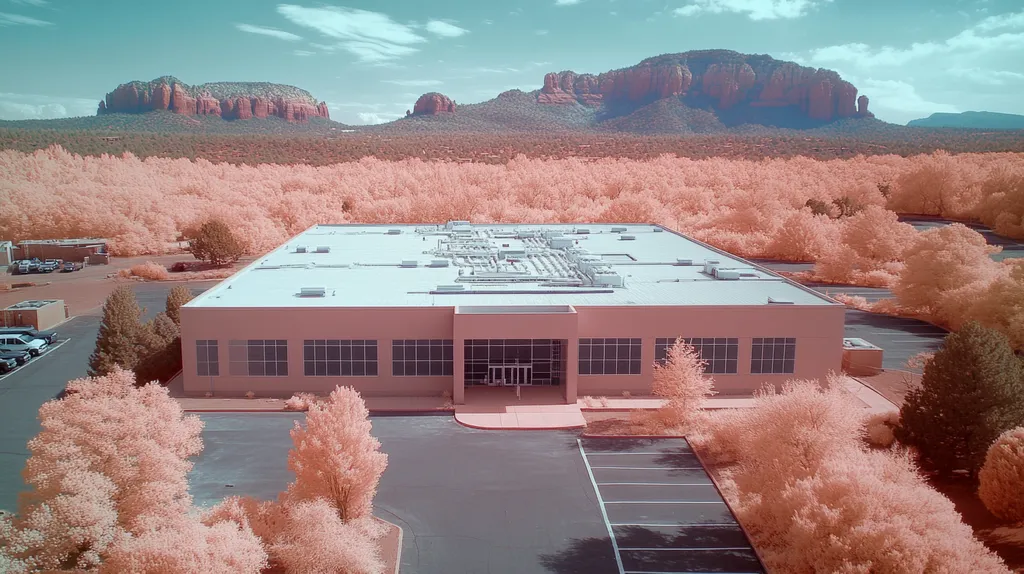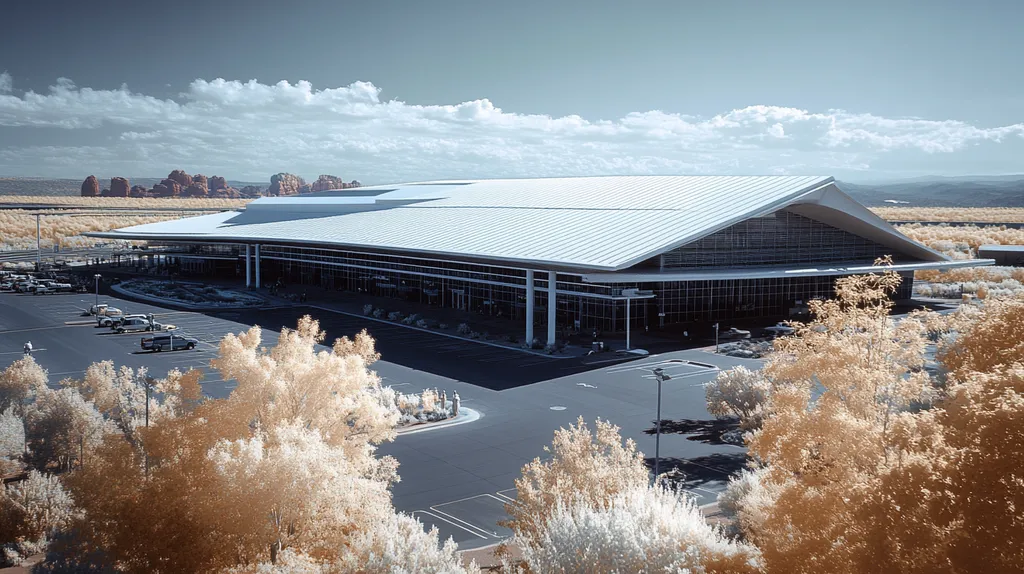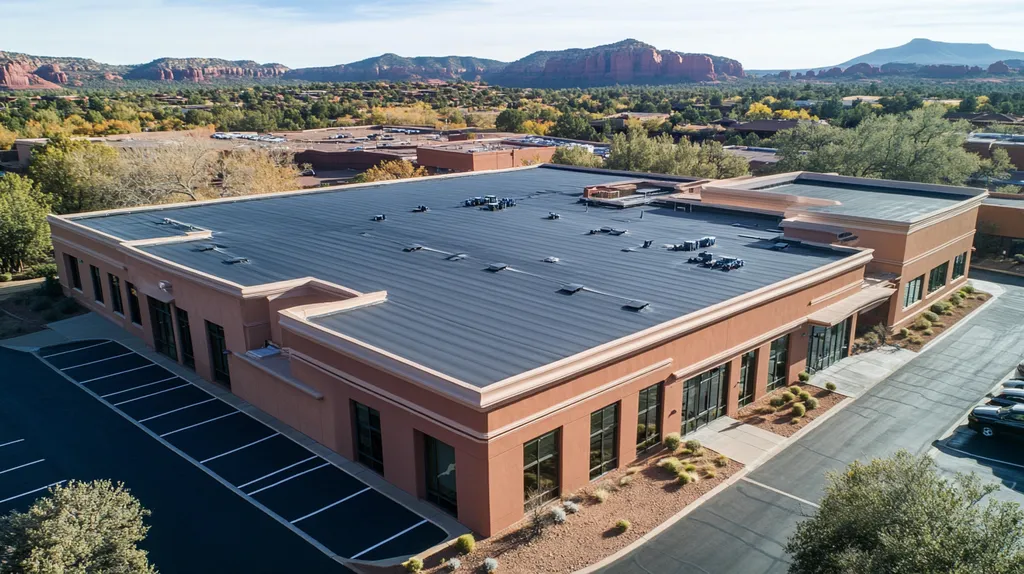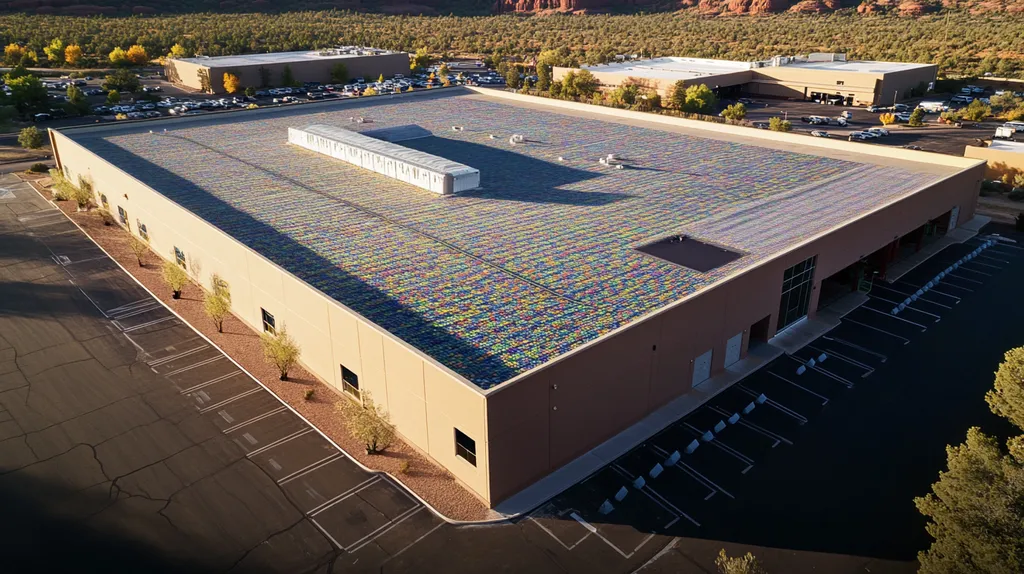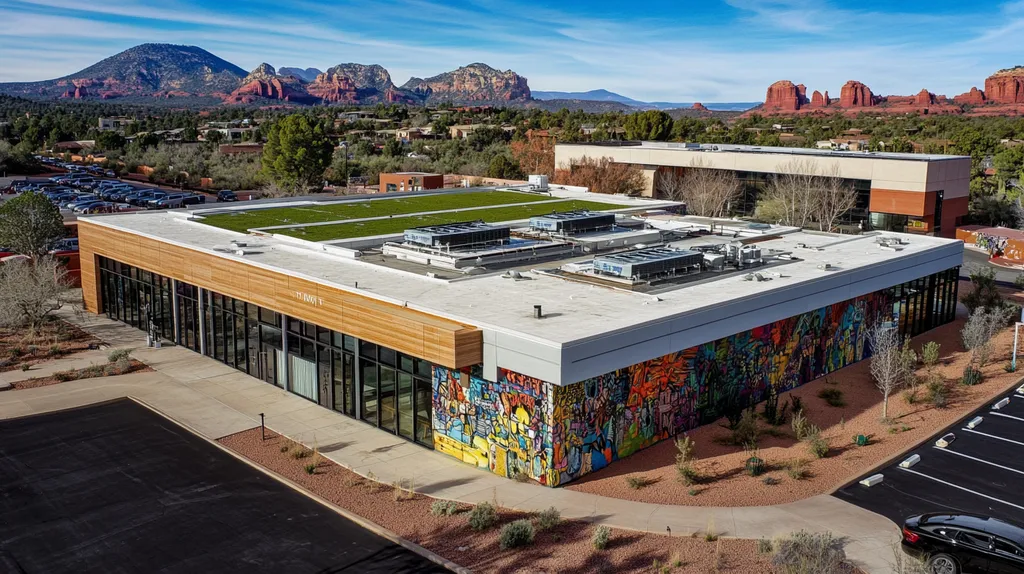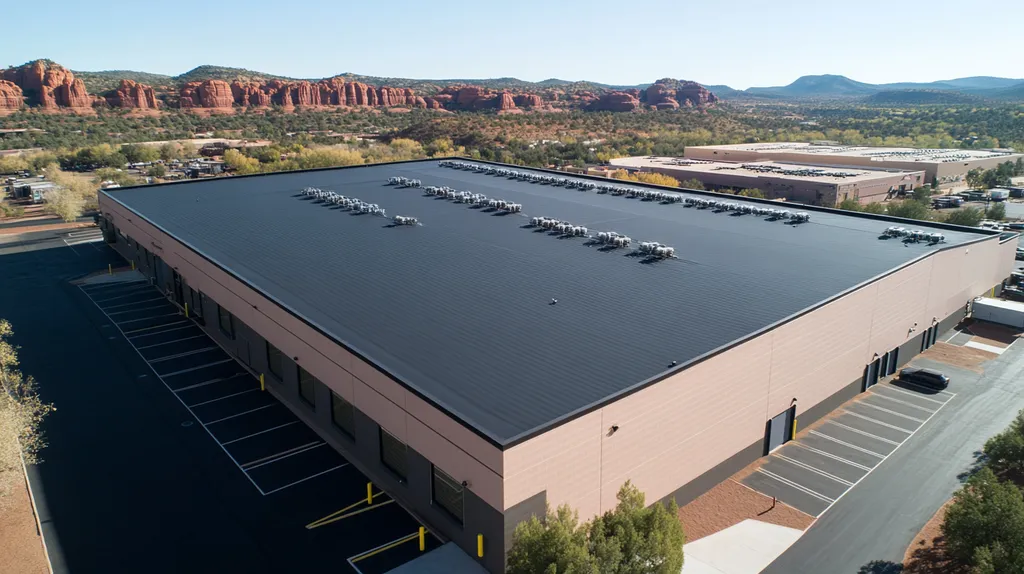Penetrations represent the single greatest threat to commercial roof integrity, with studies showing they account for up to 85% of catastrophic failures. Every year, property owners spend over $3.4 billion addressing water damage from compromised roof penetrations.
Despite mounting evidence of their critical importance, dangerous myths about penetration management continue to put billions in property assets at risk. From mechanical systems to plumbing vents, each break in the roof surface creates vulnerabilities that demand sophisticated solutions and ongoing attention.
This analysis exposes common misconceptions about roof penetrations while providing evidence-based strategies for protecting commercial building investments. Understanding these realities helps facility managers prevent minor issues from becoming major disasters.
SECTION 1: COMMON MISCONCEPTIONS
The integrity of commercial roofing systems faces a critical challenge that many building owners overlook: penetrations. Every pipe, vent, and mechanical unit that breaks through the roof surface creates a potential vulnerability. Studies show that up to 85% of premature roof failures involve penetration-related issues, yet widespread misconceptions continue to put billions in property assets at risk.
Myth: Roof Penetrations Do Not Affect Waterproofing
Roof penetrations create inherent weak points in any waterproofing system, yet many continue to minimize their significance. Even a perfectly installed penetration introduces stress points where different materials meet and move at different rates.
Each penetration requires its own carefully engineered flashing and sealing solution. Standard one-size-fits-all approaches often fail to account for the unique challenges each penetration type presents.
Temperature fluctuations cause materials to expand and contract at different rates, creating gaps where water can infiltrate. This dynamic movement means that even properly sealed penetrations require ongoing attention.
Roof damage assessments consistently identify penetrations as primary sources of water ingress, leading to extensive damage including mold growth and compromised electrical systems. (source: Tighe Property Advisors)
Belief That All Penetrations Are Properly Sealed at Installation
Initial installation represents just the first step in penetration management, not a permanent solution. Even expertly installed seals degrade over time due to UV exposure, chemical exposure, and physical stress.
Installation quality varies dramatically across contractors and projects. Without proper quality control measures, penetration seals may fail within months rather than lasting their intended lifespan.
Building movement and settling create additional stress on penetration seals. What starts as a microscopic gap can quickly expand into a major leak pathway.
Regular inspection protocols must include detailed evaluation of every penetration point. Preventive maintenance costs fraction of what emergency repairs and internal damage restoration require.
Misunderstanding Roof System Flexibility Around Penetrations
Different roofing systems handle penetrations in fundamentally different ways. Single-ply membranes require specific flashing techniques that differ markedly from built-up or modified bitumen systems.
Material compatibility presents another often-overlooked challenge. Some sealants and flashings that work perfectly with one roof type may actually accelerate deterioration in another.
The density of penetrations significantly impacts system performance. Crowding too many penetrations into a small area creates compound stress that no system can reliably handle.
Future modifications must be carefully planned to protect system integrity. Adding new penetrations without proper evaluation can compromise otherwise sound roofing systems.
SECTION 2: PRACTICAL IMPLICATIONS
Every penetration in a commercial roof represents a potential point of failure that demands careful attention. Studies indicate that penetration-related issues account for up to 60% of all commercial roof failures, with repair costs often exceeding $100,000 per incident. Understanding these practical implications helps facility managers make informed decisions about roof maintenance and protection strategies.
How Penetrations Create Vulnerable Leak Points
These penetrations, if not properly sealed, generate points of vulnerability for water leakage around vents, pipes, skylights, chimneys, and HVAC equipment. The choice of flashing materials – whether metal, thermoplastic, or rubberized asphalt – must align with both durability requirements and roof system compatibility. (source: Redrock Contracting)
Water accumulation around penetrations can quickly compromise the roof membrane’s integrity. Even minor gaps or separation between flashing and the penetration can allow moisture to seep beneath the surface, leading to hidden damage that expands over time.
Temperature fluctuations cause materials to expand and contract at different rates, creating additional stress on seals and flashings. This constant movement can accelerate wear and eventually create pathways for water infiltration.
The density of penetrations in any given area significantly impacts vulnerability. Crowded penetrations create compound stress points that multiply the risk of failure, especially in areas with high foot traffic or mechanical equipment.
Impact of Improper Sealing on Roof Longevity
Poorly sealed penetrations dramatically reduce a roof’s expected lifespan. What starts as a minor leak can quickly escalate into major structural damage, potentially reducing a 20-year roof system to failure in less than a decade.
The financial impact extends far beyond simple repair costs. Water infiltration leads to insulation degradation, reducing energy efficiency and increasing utility costs throughout the building.
Hidden moisture accumulation creates ideal conditions for mold growth and material deterioration. These secondary effects often prove more expensive to remediate than the original penetration repairs would have cost.
Regular inspection and maintenance of penetration seals represents a fraction of replacement costs. Professional evaluation of these critical points can identify potential failures before they lead to systemic damage.
Role of Penetrations in Thermal and Structural Stress
Each penetration creates a thermal bridge that can compromise the building’s energy envelope. These breaks in insulation contribute to heat loss in winter and heat gain in summer, increasing HVAC loads and operating costs.
Structural movement around penetrations introduces additional stress to the roofing system. Building settlement, wind loads, and mechanical equipment vibration all compound these forces, potentially accelerating seal deterioration.
The interface between different materials at penetration points creates zones of varying flexibility. This difference in movement capability can lead to separation and failure, particularly during extreme weather events.
Modern building designs must carefully balance the need for roof-mounted equipment with system integrity. Strategic placement and proper spacing of penetrations helps distribute structural loads and minimize potential failure points.
SECTION 3: COST OF MISINFORMATION
When it comes to commercial roofing, misinformation about penetrations carries a staggering price tag. Industry data shows that penetration-related failures can reduce a roof’s lifespan by 40-60% while multiplying repair costs tenfold. For a typical 100,000-square-foot commercial building, inadequately managed penetrations can transform a $500 maintenance issue into a $50,000 emergency repair – before factoring in internal damage and business disruption costs.
Expenses from Untreated Penetration Leaks and Damage
Water infiltration through compromised penetrations triggers a devastating chain reaction of damage. Even small leaks can saturate insulation, corrode structural components, and create ideal conditions for toxic mold growth within days.
Beyond immediate structural concerns, penetration leaks often damage inventory, disrupt operations, and compromise sensitive electronic equipment. A single severe incident can result in hundreds of thousands in losses, far exceeding the cost of preventive maintenance.
Metal roof penetrations pose particularly complex challenges for commercial buildings. Done poorly, these installations lead to accelerated deterioration and unnecessary expenses, while proper design and installation maintain system integrity without compromising performance. (source: MBCI)
The ripple effect extends to increased energy costs as wet insulation loses effectiveness, higher insurance premiums following claims, and decreased property value when damage becomes extensive.
Financial Risks of Delayed Inspection and Maintenance
Deferring penetration maintenance creates a dangerous financial gamble. What begins as a simple $500 flashing repair can escalate into a $25,000 emergency when water damage spreads to interior systems.
Regular professional inspections typically cost less than 1% of roof replacement value annually. This investment helps identify potential failures before they compromise the entire roofing system.
Emergency repairs often cost 3-5 times more than scheduled maintenance due to expedited service fees, after-hours labor rates, and the complexity of working around water damage.
The true cost multiplier comes from business interruption, with studies showing that penetration-related leaks force partial shutdowns lasting an average of 3-5 business days.
Hidden Costs of Warranty Voids Due to Poor Repairs
Many property owners unknowingly void their roof warranties through improper penetration repairs. Standard 20-year warranties become worthless when unauthorized contractors modify or repair penetration flashings.
The financial impact of a voided warranty extends far beyond immediate repair costs. Owners lose decades of protection, often discovering this only when major problems develop.
Attempting to save money with unlicensed repairs typically backfires spectacularly. These shortcuts can transform a $2,000 professional repair into a $200,000 roof replacement with no warranty coverage.
Professional installation and documentation of penetration work preserves warranty coverage while ensuring proper integration with existing roofing systems. This approach protects both the immediate investment and long-term asset value.
SECTION 4: REALITY CHECK
Commercial roof penetrations demand far more attention than most facility managers realize. Studies show that over 85% of catastrophic roof failures begin with compromised penetration points, yet many continue to treat these critical components as minor details. When a single failed penetration can flood thousands of square feet within minutes, the stakes couldn’t be higher for getting the technical details right.
Industry Standards for Penetration Detailing and Sealing
Proper penetration detailing requires precise attention to material compatibility, installation sequence, and long-term performance requirements. ASTM E2140 water penetration testing evaluates how effectively roof penetrations resist water infiltration under static pressure conditions. (source: Sheffield Metals)
Each penetration type demands specific flashing and counterflashing configurations. Metal penetrations require careful consideration of thermal movement, while plastic components need protection from UV degradation and chemical exposure.
Proper edge detailing around penetrations proves especially critical in high-wind zones. Even minor installation defects can allow wind-driven rain to bypass primary seals and compromise the entire system.
Modern roofing systems incorporate sophisticated interface materials designed specifically for penetration sealing. These products deliver dramatically better performance than traditional methods but require precise installation.
Actual Leak Patterns Linked to Penetration Failures
Water infiltration through failed penetrations follows predictable patterns that skilled inspectors can identify before catastrophic damage occurs. The first signs often appear as minor staining or efflorescence around internal penetration points.
Mechanical unit penetrations pose particularly high risks due to equipment vibration and movement. These dynamic forces can stress and ultimately break even properly installed seals over time.
Multiple penetrations in close proximity create compound stress points where failures accelerate. The interaction between different penetration types can create unexpected leak paths that bypass standard water stops.
Thermal cycling causes continuous expansion and contraction that stresses penetration seals. This daily movement gradually degrades seal integrity, especially where dissimilar materials meet.
Necessity of Regular Inspection Despite “No Leak” Assumptions
The most dangerous penetration failures often develop invisibly over months or years before showing obvious signs. By the time water appears inside the building, extensive damage has usually occurred within the roof assembly.
Modern inspection technologies like infrared scanning can detect moisture intrusion long before visible leaks develop. This early warning allows for targeted repairs while issues remain manageable.
Every penetration requires systematic evaluation of both the primary seal and secondary drainage paths. Failed secondary seals often allow extensive hidden damage while primary seals maintain apparent integrity.
Documentation of penetration conditions through regular inspections provides crucial baseline data for tracking deterioration rates. This information enables predictive maintenance that prevents emergency failures.
SECTION 5: EVIDENCE-BASED ALTERNATIVES
Every penetration through a commercial roof creates a critical vulnerability that demands sophisticated solutions. Industry data shows that 92% of catastrophic roof failures begin at poorly managed penetrations, with repair costs averaging $27 per square foot when water damage extends into the building. Modern materials and installation methods have revolutionized how we protect these vital connection points, yet many facilities still rely on outdated approaches that virtually guarantee premature failure.
Best Practices for Durable Penetration Flashing and Seals
Proper penetration protection requires a sophisticated multi-layer approach that accounts for thermal movement, structural stress, and water management. A continuous waterproof barrier must extend at least 18 inches from each penetration, with overlapping seams creating redundant protection against moisture intrusion.
Self-adhered flashing membranes, when properly installed as flexible collars around penetrations, create significantly more reliable seals than traditional methods. Closed-cell foam backer rods combined with high-grade urethane sealants provide the airtight and watertight barriers essential for long-term performance. (source: Pacific Northwest National Laboratory)
Metal counter-flashing must extend down over membrane flashings by at least 4 inches, with properly engineered slope to prevent water accumulation. This dual-layer approach dramatically outperforms single-component solutions in both durability and maintainability.
Strategic placement of penetrations away from valleys, drains, and areas of potential ice damming significantly enhances system longevity. Grouping similar penetrations allows for more effective water management while reducing the overall number of roof interruptions.
Materials and Technologies Enhancing Penetration Integrity
Advanced polymer-based flashing materials now offer unprecedented flexibility while maintaining dimensional stability across extreme temperature ranges. These materials actively accommodate building movement without compromising their waterproof properties.
Hybrid sealant systems combining butyl and silicone technologies provide superior adhesion to multiple substrate types while resisting UV degradation. This chemical resilience translates to significantly longer service life compared to traditional petroleum-based sealants.
Pre-fabricated penetration boots manufactured from EPDM and thermoplastic compounds eliminate many of the variables that plague field-fabricated solutions. These precisely engineered components deliver consistent performance across diverse climate conditions.
Liquid-applied flashing systems create seamless, fully-adhered protection that conforms perfectly to irregular penetration shapes. This technology bridges the gap between rigid and flexible systems, offering unprecedented adaptability.
Scheduled Maintenance Protocols Tailored for Penetrations
Effective penetration maintenance begins with quarterly visual inspections focusing on seal integrity, mechanical fastener condition, and early signs of material degradation. These regular checks prevent minor issues from escalating into major failures.
Digital documentation using standardized inspection protocols creates trackable maintenance histories for each penetration point. This data-driven approach enables predictive maintenance scheduling based on actual performance patterns.
Thermal imaging during optimal temperature differential conditions reveals hidden moisture migration patterns around penetrations. This technology identifies developing issues long before visible damage appears.
Semi-annual resealing of critical penetration points, particularly those subject to mechanical stress or chemical exposure, dramatically extends system longevity. This proactive approach costs roughly one-tenth what emergency repairs typically require.
Integration of weather monitoring systems helps facilities teams anticipate and respond to conditions that stress penetration seals. This intelligence-driven maintenance strategy prevents many weather-related failures before they occur.
SECTION 6: TEST AND VERIFY
Commercial roof penetrations demand rigorous testing and verification to prevent catastrophic failures. Industry data shows that undetected penetration leaks cost property owners over $3.4 billion annually in repair and restoration expenses. Without systematic testing protocols, even minor penetration issues can spiral into major structural damage within weeks. Modern verification methods have revolutionized how we detect and document these critical vulnerabilities.
Methods for Detecting Penetration-Related Water Intrusion
Electronic leak detection systems represent the gold standard for penetration testing, using low-voltage current to precisely map moisture pathways through the roof assembly. This technology can identify compromised seals long before visible damage appears.
Spray testing with calibrated nozzles simulates various wind-driven rain conditions to evaluate penetration resistance under dynamic pressure. This approach reveals vulnerabilities that static testing might miss.
ASTM E2140 water penetration testing evaluates how effectively roof penetrations resist water infiltration under static pressure conditions, providing critical data about system performance. (source: Sheffield Metals)
Dye testing with fluorescent markers allows inspectors to track exact water migration patterns around suspect penetrations. This method proves particularly valuable for complex flashing configurations where multiple potential leak paths exist.
Using Infrared and Moisture Surveys to Assess Roof Health
Advanced infrared imaging systems can detect subsurface moisture accumulation around penetrations with remarkable precision. These scans reveal trapped moisture that traditional inspection methods often miss.
Nuclear moisture detection provides quantitative data about moisture content within roofing assemblies. This technology helps establish baseline moisture levels for ongoing penetration monitoring.
Capacitance testing measures the electrical properties of roofing materials to identify areas of elevated moisture content. Regular scanning creates detailed moisture maps that track changes over time.
Core sampling around penetrations validates instrument readings and provides direct evidence of system condition. Strategic sampling helps calibrate electronic testing methods while minimizing roof damage.
Documenting and Validating Repairs to Protect Roof Warranty
Digital documentation systems now enable real-time tracking of penetration conditions and repairs. Cloud-based platforms ensure that critical test data remains accessible throughout the roof’s lifetime.
High-resolution photographic mapping creates permanent records of penetration details and repair methods. This visual documentation proves invaluable for warranty claims and future maintenance planning.
Third-party verification of repairs provides crucial independent validation of work quality. Professional oversight helps ensure that all repairs meet manufacturer specifications and preserve warranty coverage.
Establishing clear testing protocols and acceptance criteria for penetration repairs eliminates ambiguity about performance requirements. Written standards protect both property owners and contractors while ensuring consistent quality.
The Bottom Line
With penetration failures driving over $3.4 billion in annual repair costs, the commercial roofing industry can no longer afford to perpetuate dangerous myths about these critical vulnerabilities.
Studies consistently show that 85% of catastrophic roof failures originate at compromised penetration points, yet many facilities continue treating these areas as minor details rather than mission-critical components.
Modern testing methods, advanced materials, and sophisticated installation protocols now provide proven solutions for protecting penetration integrity.
The evidence is clear: proper penetration management represents the single most important factor in preserving commercial roof performance and protecting property investments.
By replacing outdated assumptions with evidence-based practices, facility managers can dramatically extend roof lifespans while slashing maintenance costs and virtually eliminating emergency repairs.
FREQUENTLY ASKED QUESTIONS
Q. Do penetrations affect the integrity of my commercial roof?
A. Yes, penetrations create weak points that can lead to water ingress and damage. Proper sealing and regular inspections are crucial to maintaining roof integrity and preventing costly repairs.
Q. What are the practical implications of roof penetrations on an industrial roof?
A. Roof penetrations can account for a significant portion of failures, impacting longevity and increasing repair costs. Each penetration must be assessed for proper sealing and maintenance to mitigate these risks effectively.
Q. How do untreated penetration leaks impact commercial roofs?
A. Untreated leaks can lead to extensive structural damage, increased mold growth, and costly repairs. It’s essential to manage and seal penetrations promptly to prevent escalating issues.
Q. What are industry standards for sealing commercial roof penetrations?
A. Standards require specific flashing and sealing techniques tailored to each penetration type. Proper detailing and material compatibility are essential to meet long-term performance expectations and resist water infiltration.
Q. What are evidence-based alternatives for sealing roof penetrations?
A. Advanced flashing materials and installation techniques provide superior protection against water intrusion. A multi-layer approach that considers building movement and stress is paramount for long-lasting seals.
Q. How can I test for water intrusion around roof penetrations?
A. Techniques like electronic leak detection, infrared imaging, and spray testing effectively identify vulnerabilities. Regular assessments help catch issues before they escalate, ensuring the roof remains watertight.
Q. What maintenance strategies can prolong the life of commercial roofs?
A. Implementing regular visual inspections, scheduled resealing, and using advanced monitoring techniques can significantly extend roof life. Preventive maintenance is key to addressing minor issues before they develop into major failures.

